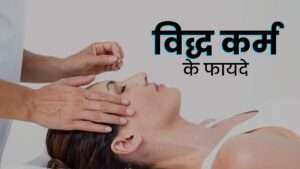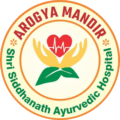Viddhakarma

Ayurveda, the ancient system of natural healing, has gained significant attention in recent times for its holistic approach to well-being. One of its profound treatments is Viddhakarma, an Ayurvedic therapy deeply rooted in tradition. In this article, we’ll delve into the details of Viddhakarma, exploring its principles, and benefits.
In a world where conventional medicine dominates, Ayurveda stands as a beacon of holistic healing. Viddhakarma, an Ayurvedic treatment, takes center stage for its unique therapeutic approach.
What is Viddhakarma?
A. Definition and Origin
In Ayurveda, “Viddhakarma” refers to the therapeutic procedure of incision or puncturing. It involves making a deliberate incision or puncture in the body to achieve specific therapeutic goals. This procedure is used in certain medical conditions where controlled incision or puncturing is considered beneficial for promoting healing, releasing accumulated fluids, or addressing specific imbalances in the body.
The origin of “Viddhakarma” in Ayurveda can be traced back to ancient Ayurvedic texts and classical Ayurvedic practices. Ayurvedic texts, such as the Susruta Samhita, which is one of the foundational texts on Ayurvedic surgery, provide detailed descriptions of various surgical procedures, including those involving incisions. These procedures were developed based on the principles of Ayurveda to address specific health conditions and promote overall well-being.
B. Principles Behind Viddhakarma
Viddhakarma in Ayurveda involves therapeutic procedures to address imbalances in the doshas (Vata, Pitta, and Kapha) and promote holistic well-being. Rooted in personalized treatment based on an individual’s constitution (Prakriti), Viddhakarma aims to restore dosha balance, clear channels (srotas), and facilitate detoxification. The process is guided by principles such as considering the aggravation of doshas, promoting ojas (vital energy), and maintaining a holistic healing approach. With therapeutic intent, Viddhakarma supports the body’s natural healing processes, emphasizing a personalized and holistic approach to healthcare in Ayurveda.
Viddhakarma Procedure
Viddhakarma in Ayurveda employs therapeutic procedures involving incisions or punctures to address specific health issues. The process and techniques vary based on the condition being treated and the dosha imbalance. Generally, the following steps are involved:
- Assessment: An Ayurvedic practitioner evaluates the individual’s health, considering dosha imbalances, specific symptoms, and the overall constitution.
- Preparation: Before the procedure, the patient undergoes preparatory measures, including dietary adjustments and lifestyle modifications to optimize the body’s readiness for the therapeutic intervention.
- Incision or Puncture: Depending on the condition, the practitioner makes controlled incisions or punctures at specific points, aiming to release trapped energy, stimulate circulation, or target affected areas.
- Herbal Applications: After the incisions, herbal pastes or oils may be applied to support the healing process and prevent infections. These herbal applications are often chosen based on their therapeutic properties.
- Post-Procedure Care: Following Viddhakarma, the patient receives post-procedure care, which may include dietary guidelines, herbal supplements, and recommendations for lifestyle adjustments to support recovery and maintain dosha balance.
- Monitoring: The patient’s progress is closely monitored, and further treatments may be recommended based on individual response and ongoing health needs.
Conditions Treated with Viddhakarma
Viddhakarma in Ayurveda is applied to address various health conditions, targeting specific imbalances and promoting healing. Some of the conditions treated with Viddhakarma include:
- Joint Disorders: Viddhakarma can be beneficial for addressing joint-related issues such as arthritis, stiffness, and inflammation.
- Musculoskeletal Problems: Conditions affecting muscles and bones, like muscle pain, strains, or fractures, may be treated with Viddhakarma.
- Neurological Disorders: Certain neurological conditions involving nerve pain or dysfunction can be targeted through specific Viddhakarma techniques.
- Skin Disorders: Skin-related issues, including chronic skin conditions, may find relief through localized Viddhakarma treatments.
- Metabolic Disorders: Viddhakarma may be employed to address imbalances in metabolic functions, promoting better digestion and metabolism.
- Circulatory Issues: Conditions related to blood circulation and vascular health can be addressed through specific Viddhakarma procedures.
FAQs
Viddhakarma can be tailored to suit individual needs, but it’s essential to consult with a qualified practitioner to ensure suitability.
The duration varies based on individual health conditions, but treatments typically span several days.
When performed by a qualified practitioner, Viddhakarma is generally safe. However, individual reactions may vary.
In many cases, Viddhakarma can complement conventional treatments, but it’s crucial to consult with healthcare providers.
Ayurveda is gaining recognition, with some countries integrating it into their healthcare systems.
Uniqueness of our therapies
At Arogya Mandir – Shri Siddhanath Ayurvedic Hospital, Miraj, we delve deeply into the ayurvedic examination of each patient. Utilizing noninvasive Ayurvedic diagnostic tools such as Ashtavidha Parikshan and Nadi Parikshan, we precisely determine the pathogenesis of the disease and then prescribe therapies tailored to the specific condition. This approach leads to expedited results.
Our therapies boast the following distinctive features:
– Tranquil and hygienic therapy rooms staffed with trained therapists in a positive environment.
– Selection of appropriate massage oil based on the patient’s Prakruti and the condition of the disease.
– Complimentary Prakruti and Dhatu Sarata examinations before the commencement of therapies.
– Authenticated procedures for each therapy.
– Judicious use of herbal medicines and instruments during the therapy sessions.
– Specialized rooms equipped with all facilities for inpatient care.
Feel free to share this article at no cost.
Copyright message – Dr. Prashant Chivate has published this article on drchivateayurved.org for informational purposes about diseases. Any other use of this article is strictly prohibited. All rights reserved.
